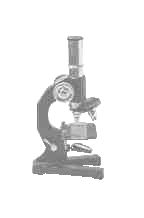
Features
Research & Innovation
BIOPULPING ECONOMICS
SYRACUSE, NY -- In the December 1998 issue of TAPPI JOURNAL, an article by Gary Scott, State University of New York, and Ross Swaney, University of Wisconsin, studies a New technology for papermaking:...
March 1, 1999 By Pulp & Paper Canada

SYRACUSE, NY — In the December 1998 issue of TAPPI JOURNAL, an article by Gary Scott, State University of New York, and Ross Swaney, University of Wisconsin, studies a New technology for papermaking: biopulping economics. Fungal pretreatment of wood chips prior to mechanical pulping (biopulping) reduces the electrical energy needs during refining, potentially increases mill throughput and improves paper strength. An economic analysis of a 600-ton-per-day (tpd) TMP mill indicates that, based on energy savings alone, the process is economically feasible and results in overall savings of about US$10pt. Increasing mill throughput by 20% achieves additional savings of more than US$40pt. Replacement of TMP for kraft pulp results in additional savings. For any particular mill, the savings realized will depend on the specific conditions of the mill, utility costs and current operations. The conclusion is that biopulping is feasible from both an engineering and economic standpoint.
HARDWOOD LIGNIN REACTION WITH CLO2
TORONTO, ON — In the November 1998 issue of Appita Journal, a paper by A. Bruce McKague, Douglas Reeve and Arthur Grey, University of Toronto, described the reaction of the hardwood lignin model compound 4-methylsyringol with chlorine dioxide. The hardwood lignin model compound 4-methylsyringol 1c reacted with two moles of chlorine dioxide to give the quinone 3a as the major product. With three moles of chlorine dioxide, the ketoacid esters 4a and 4b and the maleic acids 5a and 5b were the major products. The furan 6a, which was formed in less than 1% yield, was the only product isolated to provide evidence that muconic acid intermediates are formed in the reaction of hardwood lignin structures with chlorine dioxide.
FACTORS DETERMINING PAPER BURST STRENGTH
TACOMA, WA — A paper in the January 1999 issue of TAPPI JOURNAL, details the Effect of fiber length and coarseness on the burst strength of paper. The paper, by Farouk El-Hosseiny and Dwight Anderson, Weyerhaeuser Co., notes that theoretical models that predict burst strength give an invariant expression in which burst is proportional to the product of average tensile strength and the square root of machine direction strain to failure, both measured in uniaxial tension. The authors have demonstrated the validity of this expression in randomly oriented handsheets, but a correction factor is required to prevent this model from underpredicting burst. A plausible explanation for the correction factor is the biaxial nature of the burst test. Earlier studies have shown that biaxial testing results in a higher tensile strength than uniaxial testing. The present study demonstrates that the correction factor varies with furnish. The fibre properties that affect the correction factor are fibre length and fibre coarseness: fibre length increases it and fibre coarseness decreases it. Application: Burst strength can be calculated from tensile index, strain to failure, fibre length and fibre coarseness.
Further information about items appearing in R&D NEWS can be obtained by contacting the editorial offices of PULP & PAPER CANADA, phone 514-630-5955 or fax 514-630-5980. For Canada and the US, toll free, 1-800-363-1327.
Print this page